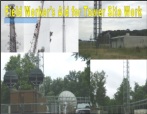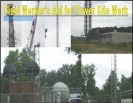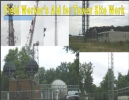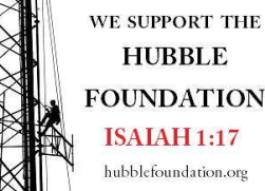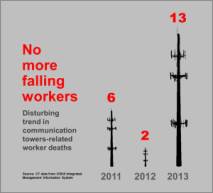Podcast: Play in new window | Download | Embed
Subscribe: Apple Podcasts | RSS
I am taking this moment to let you all know that I put together a Scope of Work tutorial so everyone out there can understand the SOW. Yes, a shameless plug for something I made to help you out. I have a page setup to help you out, go to http://wadesarver.com/scope-work-training/ to learn more. Price is $24.99US but for reading this I have a discount code w4w_sow that will save you about $10 off of that price. I put this together for the wireless field workers that need to understand the SOW or may have to write one. It is a video tutorial. I have a free PDF white paper to help. Feel free to download it and see if it can help you out. If you want to order now click on the icons below.
I understand from many of you that you are working as contractors and need to write or update a SOW. My intention is to make sure that you understand the work in the SOW and that you understand how to protect yourself from doing work that is not covered in the SOW. I tried to make it clear how this is going to be your key to getting paid for the work you do and how you can create a change order for the work that is not in the SOW. Remember that all the extra work you do will cost your company money so you will need to weigh out whether the customer is going to appreciate it and reward you with more work or if they are taking advantage of you. That is your call but if the SOW is properly written you can make it your decision how to process.
And now, more Feedback!
OK, now let’s get to the feedback. Let me start by saying that I really appreciate the time you have taken to post notes in the feedback forms, thank you! I don’t post names because I don’t want anyone to get in trouble or be ridiculed by the tower community. If you put your company name in, I will post it unless I find it offensive in some way.
OK, let’s get started.
From my post “Climbing alone” we have:
Comment: Awesome ……like minds are good to hear
Response: Thank you!
Comment OSHA 1910.151(b) in the absence of an infirmary, clinic, or hospital in near proximity to the workplace which is used for the treatment of all injured employees, a person or persons shall be adequately trained to render first aid. Adequate first aid supplies shall be readily available. Seemingly this indicates the necessity of a minimum of two persons.
Also, OSHA 1910.38 Emergency action plans. The requirements for a rescue plan under OSHA 1910.38 require a written rescue plan is on site completed and signed by all participating personnel.
To my knowledge, I have never reviewed a plan of rescue that
could be construed with a single climber carrying out the complete written activities to be performed during execution of a rescue.
One last thought, I do not believe there is a legal allowance affording the presence of only a single employee on site at any given time. This/these are my interpretation of the readings of the above stated reg.’s. Be familiar with the rules and when and where they may apply. Help with your crew members to become familiar, and at the same time become able to Trust yourself to know. That’s all I have,
Response: Thank you sir!
Comment: Wade – I wrote a blog post about this myself back in May:
http://safetyoneinc.com/climbing-alone/
I hear about this frequently. Not too long ago one of our clients told me about how he fired someone for climbing alone after repeated warnings. Nice to see someone stand behind his words with actions.
Be Safe!
Response: Thank you for taking the time to let everyone know the dangers of climbing alone. Even if you think you can, it is better to have someone there. I know the mentality that it won’t happen to you. We all think that until something so stupid happens, then we know it could happen to anybody. Things happen, good and bad, not always in our control or we get careless. Not fair, but it does. We aren’t always smart, safe, and we don’t always pay attention. We say we do, but we get stupid when we are in a hurry or tired. I know I do!
Comment: Well I do understand where this is coming from. I remember when our policy was buddy system we were to NEVER climb alone. Then as the company got busier it was well its okay just call me before, at location, and back on the ground. Then it went to no mention the fact I was aligning a 6′ or 10′ antenna by myself at 500’….. As time went on the company got so adapted to us climbing alone that if I said someone should be with me , it turned into well I guess we didn’t have what it took to step up. I made my way from greenhorn to lead man to supervisor, to job coordinator. After 15 years I decided to leave. There comes a point when a man becomes a man (at times a stupid one) but we all do what we have to do to take care and provide for the time being. Once he or she realizes the company that sends them out alone is only worried about their Upper Management Bonus check that comes in when the job was done with less payroll. PROFIT is all it comes down to. So if you’re reading this and you understand what I mean. Stop living (risking) your own life for your company that doesn’t care about your worth as an employee. I’m no longer there and left the industry entirely. Now I only kick myself for not doing these 14 years and 11 months ago. When your employer values and respects you……. You as an employee will have a new-found fire and self-worth to exceed farther than you would if you were left alone with no help if needed. Be safe guys and WHOOP! WHOOP! Climb safe and take your time to double-check your anchor. And remember its okay to be 100% tied off it’s a good habit & gets you home safe. Take care.
Response: Thank you for the honesty! I know exactly what you mean. We usually start out with the best intentions, but then something changes, the workload, the schedule, the bonuses, the money, or we just get lazy. We may deny all of these, but I have been there and I have the advantage of 20/20 hindsight, and I know that I fell into these categories. Denial is something we can do until something terrible happens, then all we have is our excuses.
Comment: At the end of the day it all comes down to safety training. But people still make mistakes… most of which I’d say is caused by fatigue caused by poor management, busy work schedules, pressure to finish sites quickly, etc. Wireless work is very complex and it takes very knowledgeable people to make it work.
Response: So true!
OK, I have more feedback and I guess I have to do a follow-up. I will put more out in the next post unless some big news happens. I will try to get it to you soon!
Let me know what you think, don’t be shy!
- By the way, if you stuck with me this far, here are some links that you may find useful!
- Antenna basics free tutorial http://host.comsoc.org/freetutorial/rohde4/rohde4.html
- Cold Stress information http://www.cdc.gov/niosh/topics/coldstress/
- Wireless Estimator is creating a Wireless Blue Book to help you find all your wireless needs in one location, http://www.wirelessestimator.com/blue-book/#!/
- Trauma Kit information https://wadesarver.com/Podcast/critical-mindset-lane-falkner-talks-about-trauma-kits/
- NATE webinar NATE Webinar Article…
- I have books; please take a look at the new pages I created, http://wadesarver.com/tower-climbing-introduction/ and http://wadesarver.com/field-workers-aid-tower-site-work/ so you can get more information!
Don’t forget, support Hubble!
Search on iTunes for Wade4wireless and write a review now! Listen please!
Guess what?!! I have finished a training video for the SOW.
The price for the Scope of Work training is $24.99 but I have discounts for those of you who read this.
Gumroad for credit card sales – Save $10 by entering this code – w4w_sow. Credit Card https://gum.co/Wade4Wireless_SOW
Sellfy for PayPal sales – Save 40% by entering this code – w4w_sow. PayPal https://sellfy.com/p/BumL/
Kindle Books:
PDF books so you can buy with PayPal:
PDF books you can pay with Credit Card:








